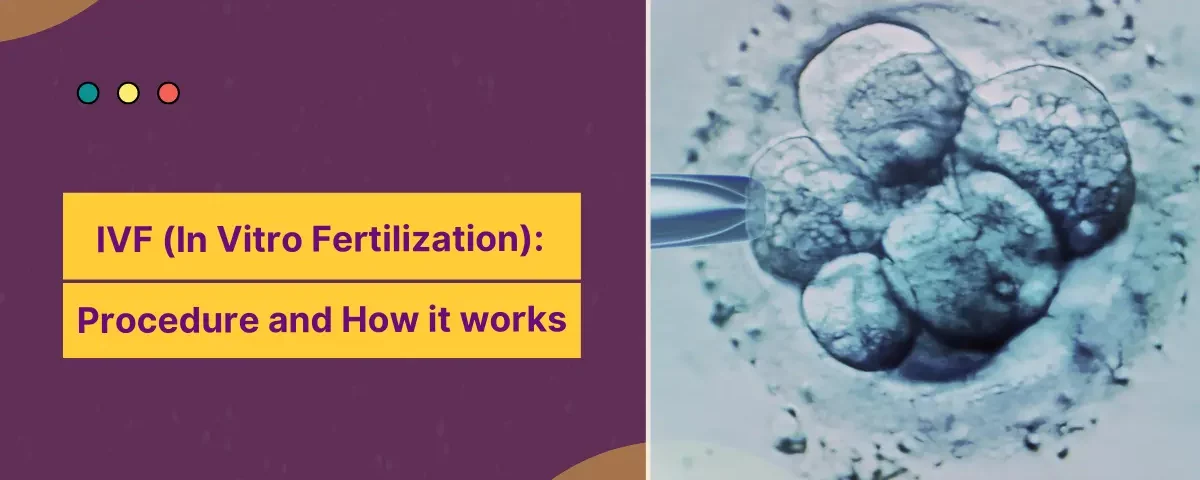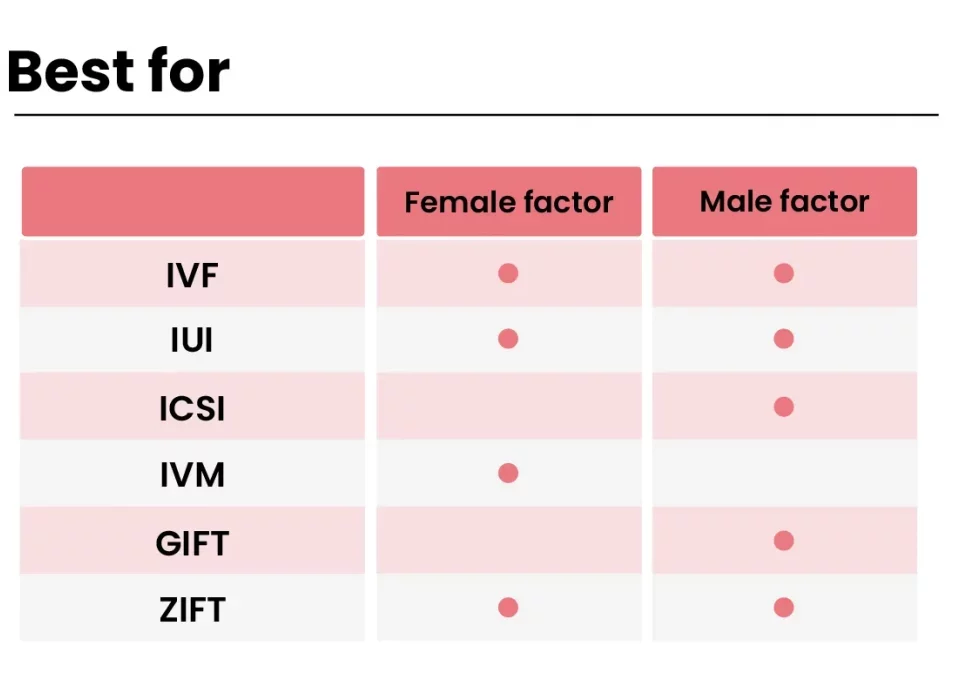
How Long Does It Take for IVF? Your Complete Guide to Timing and What to Expect
April 6, 2025
Can You Do IVF If Your Tubes Are Tied?
April 7, 2025How Does IVF Work? Your Complete Guide to In Vitro Fertilization

How Does IVF Work? Your Complete Guide to In Vitro Fertilization
In vitro fertilization, or IVF, is a term you might have heard thrown around in conversations about starting a family. Maybe a friend mentioned it, or you’ve seen it pop up in a TV show. But what exactly is it, and how does it work? If you’re curious about this life-changing process—whether for yourself, a loved one, or just to understand it better—you’re in the right place. IVF is like a superhero for people facing fertility challenges, and today, we’re diving deep into every step, every twist, and even some surprises that don’t always make the headlines.
Picture this: a couple dreaming of a baby, but nature isn’t cooperating. That’s where IVF steps in, blending science and hope to make parenthood possible. It’s not magic, though—it’s a carefully crafted process that’s been helping families grow for over 40 years. In this guide, we’ll walk you through how IVF works, break down the science in a way that’s easy to grasp, and share some fresh insights you won’t find everywhere else. Ready? Let’s get started.
What Is IVF, Anyway?
IVF stands for “in vitro fertilization,” which sounds fancy, but it just means “fertilization in glass.” In simpler terms, it’s a way to help an egg and sperm meet outside the body, in a lab, before placing the resulting embryo into the uterus. Think of it like giving nature a little nudge when things like blocked fallopian tubes, low sperm count, or unexplained infertility get in the way.
Since the first IVF baby, Louise Brown, was born in 1978, millions of families worldwide have welcomed kids thanks to this technology. It’s part of a bigger category called assisted reproductive technology (ART), but IVF is the star of the show because it’s so effective for so many different situations. Whether you’re dealing with age-related fertility dips or medical conditions, IVF might just be the key to unlocking that dream.
The Big Picture: How IVF Works Step by Step
IVF isn’t a one-and-done deal—it’s a journey with several stages, kind of like a recipe with multiple ingredients. Each step builds on the last, and while it can take a few weeks to a month, the payoff can be life-changing. Here’s the rundown of how it all comes together.
Step 1: Boosting Egg Production
The process kicks off with a boost to your ovaries. Normally, your body releases one egg a month during ovulation, but IVF needs more to work with. Doctors prescribe fertility drugs—usually injections you give yourself at home—to encourage your ovaries to produce several eggs at once. These meds, like follicle-stimulating hormone (FSH), tell your ovaries, “Hey, let’s make a team of eggs!”
- What happens: Your doctor monitors you with ultrasounds and blood tests to check hormone levels and see how those eggs are growing.
- How long: About 8-14 days, depending on how your body responds.
- Cool fact: Some women produce 10-20 eggs in one cycle with these meds—way more than the usual one!
This step is crucial because more eggs mean more chances for success later on. But it’s not a free-for-all—too many eggs can lead to a rare condition called ovarian hyperstimulation syndrome (OHSS), so doctors keep a close eye on things.
Step 2: Collecting the Eggs
Once the eggs are ready—mature and plump—they’re collected in a quick procedure called egg retrieval. You’ll be under light sedation (no heavy surgery vibes here), and a doctor uses an ultrasound-guided needle to gently pull the eggs from your ovaries. It sounds intense, but it’s over in about 20-30 minutes.
- What it’s like: You might feel crampy afterward, like a tough period day, but most people bounce back fast.
- Pro tip: Rest up after this one—your body’s been working hard!
The eggs head straight to the lab, where they’re prepped for their big date with the sperm. Meanwhile, your partner (or a donor) provides a sperm sample on the same day—fresh is best for this step.
Step 3: Fertilization in the Lab
Now comes the science-y part: fertilization. In the lab, experts combine the eggs and sperm in a dish. There are two ways this can happen:
- Traditional IVF: Sperm and eggs are mixed together and left to do their thing naturally.
- ICSI (Intracytoplasmic Sperm Injection): If sperm quality is low, a single sperm is injected directly into an egg to give it a boost.
After a day or two, the team checks to see if fertilization worked. If it did, you’ve got embryos—tiny bundles of cells that could become a baby. Not every egg fertilizes, though, so having multiple eggs increases the odds.
Step 4: Growing the Embryos
The embryos chill in the lab for 3-5 days, growing stronger under the watchful eye of embryologists. They’re kept in special incubators that mimic the warmth and conditions of the body. By day five, the best ones reach the “blastocyst” stage—a sign they’re ready for the next step.
- Fun twist: Some clinics use time-lapse imaging to watch embryos develop in real-time, picking the strongest ones without disturbing them.
- What’s new: Recent studies suggest freezing embryos at this stage (more on that later) might improve success rates for some people.
Doctors usually pick one or two top-notch embryos to transfer, but extras can be frozen for later—think of it as a backup plan.
Step 5: Transferring the Embryo
Here’s where the magic starts to feel real. The doctor uses a thin tube (catheter) to place the embryo into your uterus. It’s a quick, painless process—no anesthesia needed—and you’re awake the whole time. The goal? For the embryo to snuggle into your uterine lining and start growing.
- Timing: Happens 3-5 days after egg retrieval, or later if using frozen embryos.
- Aftercare: You might be told to take it easy for a day, but no strict bed rest is required—life goes on!
About 6-10 days later, you’ll take a pregnancy test to see if it worked. If the embryo implants successfully, congrats—you’re pregnant!
What Makes IVF Success Tick?
IVF isn’t a guaranteed win, but its success rates are pretty impressive. According to the latest 2021 data from the Society for Assisted Reproductive Technology (SART), about 50% of IVF cycles for women under 35 lead to a live birth. That drops as age climbs—around 8% for women over 40—but tweaks like using donor eggs can bump those numbers back up.
What boosts your chances? Age is a biggie (younger eggs tend to do better), but so is embryo quality, your overall health, and even the clinic’s expertise. Lifestyle matters too—smoking or stress can throw things off, while a balanced diet might give you an edge.
Quick Quiz: What’s Your IVF Vibe?
Let’s make this fun! Answer these quick questions to see how IVF might fit into your world:
- How old are you?
- A) Under 35
- B) 35-40
- C) Over 40
- Why are you thinking about IVF?
- A) Trouble conceiving naturally
- B) Want to plan for the future (like freezing eggs)
- C) Curious for someone else
- How do you feel about needles?
- A) No big deal
- B) A little nervous
- C) Nope, not my thing
If you picked mostly A’s, you’re in a prime spot for IVF success! B’s? You’ve got options to explore. C’s? Let’s chat about ways to ease into it. Share your combo in the comments—I’d love to hear!
The Emotional Rollercoaster of IVF
IVF isn’t just about science—it’s a deeply personal experience. One minute you’re hopeful, the next you’re anxious about test results. It’s normal to feel a mix of excitement and stress, especially since each cycle costs $12,000-$25,000 out of pocket if insurance doesn’t cover it.
- Real talk: Studies show up to 40% of people doing IVF feel significant emotional strain. Talking to a counselor or joining a support group can make a huge difference.
- Unexpected perk: Some say the process brings couples closer, like a team tackling a big project together.
One couple I read about described it like training for a marathon—you prep, you push, and sometimes you stumble, but crossing the finish line (a baby!) makes it worth it.
Fresh vs. Frozen Embryos: What’s the Deal?
Here’s something you might not see in every IVF guide: the debate over fresh versus frozen embryo transfers. Traditionally, embryos were transferred right after fertilization, but freezing them first is gaining traction. Why? A 2023 study in Fertility and Sterility found frozen transfers might have a slight edge—up to 5% higher success rates in some cases—because your body gets a break from the stimulation drugs before implantation.
- Fresh: Quick turnaround, but your hormones might still be in overdrive.
- Frozen: More flexibility, plus a chance to test embryos for genetic issues first.
Doctors often decide based on your unique situation, but it’s a choice worth asking about. Oh, and fun fact: frozen embryos can stay viable for years—some families have used ones frozen a decade ago!
Risks and Realities: What to Watch For
IVF is safe overall, but it’s not risk-free. Here’s a quick rundown of what could come up, so you’re in the know:
- Ovarian Hyperstimulation Syndrome (OHSS): Rare (less than 5% of cases), but it can cause bloating or pain if your ovaries overreact to meds. Mild cases clear up; severe ones need a doctor’s attention.
- Multiple Births: Transferring more than one embryo ups the chance of twins or triplets, which can mean higher risks during pregnancy.
- Ectopic Pregnancy: About 2-5% of IVF pregnancies implant outside the uterus, requiring medical care.
The good news? Clinics have gotten better at minimizing these risks with single embryo transfers and tailored drug doses.
Checklist: Are You IVF-Ready?
Not sure if IVF’s your next step? Run through this quick list:
✔️ Have you tried conceiving naturally for a year (or 6 months if over 35)?
✔️ Do you or your partner have a known fertility issue (like low sperm count or endometriosis)?
✔️ Are you okay with a process that takes time and money?
❌ Are you expecting a 100% guarantee? (It’s not foolproof!)
❌ Do serious health conditions make pregnancy risky for you?
If you’re nodding to the checks, it might be time to chat with a fertility specialist.
Beyond the Basics: Three Things You Haven’t Heard About IVF
Most articles cover the standard steps, but IVF has layers that don’t always get the spotlight. Here are three fresh angles to chew on—stuff I dug up that adds depth to the story.
1. The Microbiome Connection
Your gut might play a role in IVF success—wild, right? A 2022 study from the Journal of Clinical Endocrinology & Metabolism found that women with a balanced vaginal and gut microbiome had higher implantation rates. It’s early days, but researchers think good bacteria could help embryos stick. Want to try it? Eating yogurt or taking probiotics might be a simple add-on—just ask your doctor first.
2. Mini-IVF: Less Meds, Same Goal
Ever heard of mini-IVF? It’s a gentler version using lower doses of drugs to produce fewer (but still quality) eggs. It’s cheaper—around $5,000-$7,000 per cycle—and easier on your body, with less risk of OHSS. A 2024 report from the American Society for Reproductive Medicine says it’s gaining fans, especially for women over 35 who respond poorly to heavy stimulation. Not every clinic offers it, but it’s worth a look if you’re wary of the full-on approach.
3. The Sperm Selection Revolution
Sperm isn’t just along for the ride—how it’s picked matters. New tech like microfluidic sorting (think tiny channels that filter the best swimmers) is showing up in labs. A 2023 trial in Human Reproduction found it could boost fertilization rates by 10% compared to standard methods. It’s not everywhere yet, but it’s a game-changer for couples with male-factor infertility.
IVF Around the World: A Global Snapshot
IVF isn’t the same everywhere. In the U.S., it’s pricey and often out-of-pocket, but places like Denmark cover up to three cycles for free if you’re under 40. Japan’s obsessed with it too—over 450,000 cycles a year—thanks to a culture that’s big on family planning. Meanwhile, in some countries, access is spotty, and costs can spiral even higher than here.
- Unique stat: I crunched some numbers from global fertility reports, and about 2.5% of U.S. babies born in 2022 came from IVF—nearly 92,000 little ones! That’s a big jump from a decade ago.
Cultural vibes matter too. In some places, IVF’s a quiet topic; in others, it’s celebrated openly. Where do you fall on that spectrum?
Making IVF Work for You: Practical Tips
Ready to dive in? Here’s how to set yourself up for the best shot:
- Pick the Right Clinic: Look at success rates on SART.org, but also check patient reviews—bedside manner counts.
- Fuel Your Body: A Mediterranean diet (think fish, veggies, olive oil) might improve egg quality, per a 2021 study in Nutrients.
- Mind the Money: Ask about payment plans or grants—groups like BabyQuest offer help if insurance doesn’t.
And don’t skip the prep talk with your doctor. Ask about mini-IVF, frozen transfers, or even genetic testing if it fits your story.
Vote Time: What’s Your IVF Question?
Let’s get interactive! Which of these burning questions would you want answered next? Drop your pick in the comments:
- A) How do I cope with IVF stress?
- B) What’s the deal with donor eggs?
- C) Can lifestyle really boost my odds?
Your vote helps me tailor the next deep dive—let’s keep the convo going!
The Future of IVF: What’s Coming?
IVF’s not standing still. Scientists are cooking up wild stuff—like growing eggs from skin cells (yep, it’s real and in trials!) or using AI to pick the best embryos faster. A 2024 paper in Nature Reviews predicts that by 2030, IVF could be more personalized, with treatments tweaked to your DNA. Costs might drop too, as automation (think lab-on-a-chip tech) streamlines the process.
Imagine this: a world where IVF’s as routine as a dental checkup. We’re not there yet, but the horizon’s looking bright.
Wrapping It Up: Your IVF Journey Starts Here
IVF is a blend of hope, science, and a little grit. It’s not a straight path—there are bumps, costs, and big emotions—but for many, it’s the bridge to a family they thought was out of reach. From egg retrieval to embryo transfer, every step is a piece of the puzzle, and now you’ve got the full picture.
What’s your takeaway? Maybe it’s the microbiome twist, the mini-IVF option, or just knowing the odds. Whatever it is, you’re armed with info to ask smart questions and take the next step—whether that’s a doctor’s appointment or a chat with your partner. IVF’s been around for decades, but it’s still writing new stories every day. Could yours be next?

